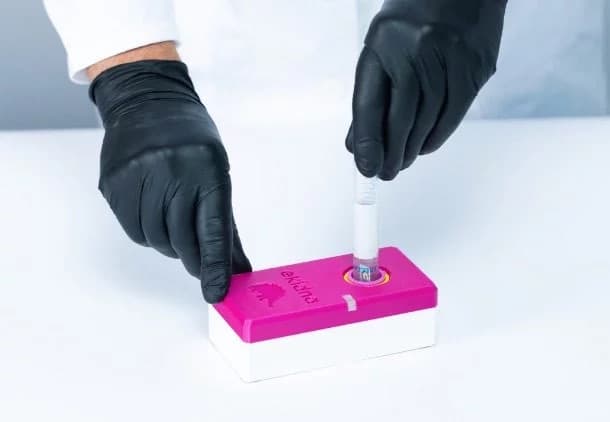Delivering Better Insight
and Control
Even the best-run labs can’t deliver perfect accuracy or precision in testing results. Ekidna’s patented technology delivers error rates of +/- 1% by weight, as accurate as a lab — and well within acceptable tolerances.
While error rates and error propagation are not a simple topic, we’ll provide an overview of the factors affecting accuracy and explain how we can control them.
What is Error?
Measuring THC and CBD
There are two typical ways to measure the amount of cannabinoids in samples:
- Weight percent: the numbers that are quoted on packaging for THC and CBD. These are typically in “gram per gram” amounts, meaning that a 20% THC product has 0.2g of THC per gram total product. These weight percentages are the ones that everyone is most familiar with.
- Relative Error Percentage: when describing your test results, this is the percent off the true value of whatever you are testing. In this case, 5% error means +/- 5% off the true value.
For example, if you had a 20% (weight percent) THC flower sample, and you tested this sample with a test that was 5% error (relative error percent) you would expect your test results to fall between 0.19g and 0.21g THC. This results in a weight percent reading between 19%-21% THC for a sample that has a true value of 20% THC. Ekidna promises to deliver +/- 1% (weight percent) accuracy with our devices.
For Hemp Growers:
Lower Limit of Detection
A limit of detection is the lowest amount that a test can identify is present, but not necessarily accurately quantify. The current lower limit of detection for our test kits is about a 1.5% (weight percent) THC flower sample.
The technology behind our sensors is capable of much lower limits, however, and we are currently tuning a new version of our test kits for hemp-specific analysis.
Please contact us to get more information.

Sample Types Tested
We have not yet validated our error rates on the more complex samples like lotions or edibles, but we have no doubt that we can tune our test for these in time. The same is true for detecting other cannabinoids aside from THC and CBD (we already have preliminary results for CBG and CBN).
Accuracy in Testing —
Without the Need for a Lab
Ekidna is fast, accurate and decentralized. Learn more about how Ekidna can bring
efficiencies to your operation.
Footnotes
- Liz Wagner, Michael Bott, Mark Villarreal, M. H. Industry Insiders Warn of Fraud at Marijuana Testing Labs – NBC Bay Area. NBC Bay Area Investigative Unit (2017).
- Bonn-Miller, M. O. et al. Labeling accuracy of cannabidiol extracts sold online. JAMA – J. Am. Med. Assoc. 318, 1708–1709 (2017).